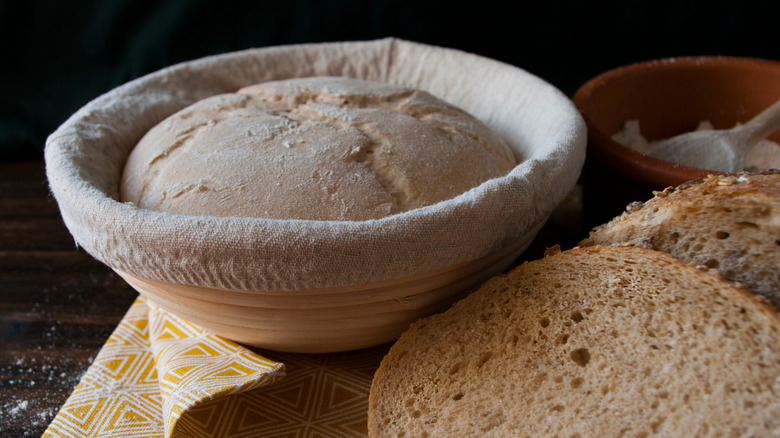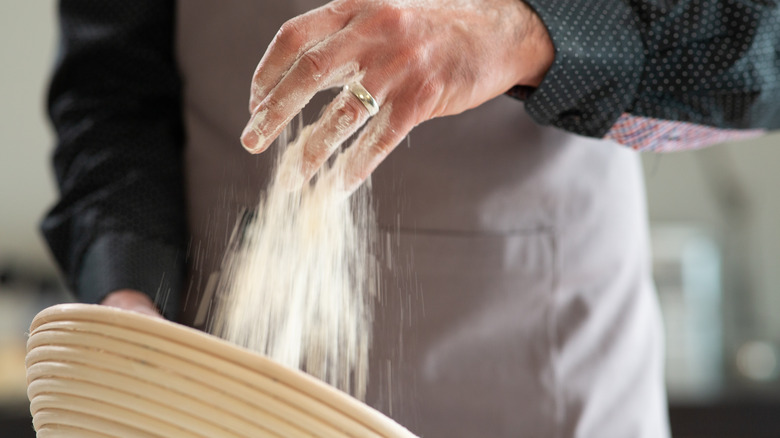How To Use Banneton Liners So You Don't Have To Clean Them Often
Breadmakers rely on bannetons to form bread loaves into the desired shape. These proofing baskets, also known as brotforms, come in various sizes and shapes to mold dough into round boules or elongated bâtards. They are instrumental in shaggy, high-hydration recipes to make tender bread. Bannetons prevent the dough from spreading flat, enabling it to rise higher for a bigger crumb.
Although unnecessary, bannetons can be used with a liner, which allows the dough to be removed more easily and limits the risk of it sticking and deflating. Like a cast iron pan, the liners are seasoned to keep them nonstick, so washing them after each use will increase the chances of the dough tearing when released from the basket. With proper care, you won't have to clean the liner often. This starts with preventing the dough from sticking, which can cause mold.
After using the basket, use a stiff-bristled brush to remove excess flour from the liner. While we want the flour to build up over time, crusty pieces should be removed. Dust the surface with flour, preferably rice flour, to prevent the dough from sticking. Shake out the excess flour and add your shaped dough to the basket to proof. Once you release the dough from the banneton, let the liner dry completely before shaking and storing it. Either place it on the oven as the bread bakes or dry it in the cooled oven once you remove the bread.
When to clean a banneton liner
Unfortunately, there are occasions when you must wash the liner, which means seasoning it all over again afterward. If the liner isn't dried thoroughly before storage, mold may develop and need to be removed. In addition, when the banneton's seasoning flakes off, it's time to wash it. That surface, known as the crust, can chip off into your homemade bread if it gets too thick, making unpleasantly crunchy bites.
If the liner is removable, soak it with dish soap in warm water until the caked-on particles can be easily removed. If your faucet has a spray nozzle, use it to help blast away debris. If necessary, use a brush to loosen the crusty buildup. Since the liners are in contact with food, avoid washing them with harsh chemicals or using the dishwasher. Rinse the liner in clean water and allow it to dry completely before storing.
When using the cleaned banneton, ensure an even flour coating on the liner before placing the dough inside. Some bakers like to use a clean hairnet as an insurance policy as the seasoning rebuilds. If the dough sticks (and it happens to all of us), invert the banneton onto parchment paper and let gravity loosen it from the basket. Allow any stuck-on dough to dry to remove it more easily. To prevent mold from developing, the liners can be stored in a resealable plastic baggie in the freezer.


